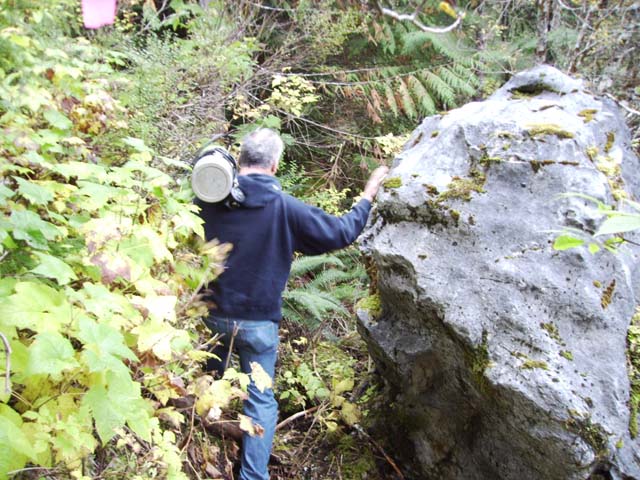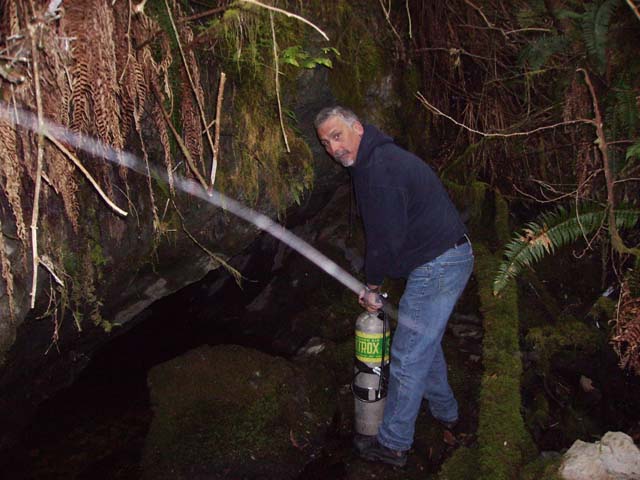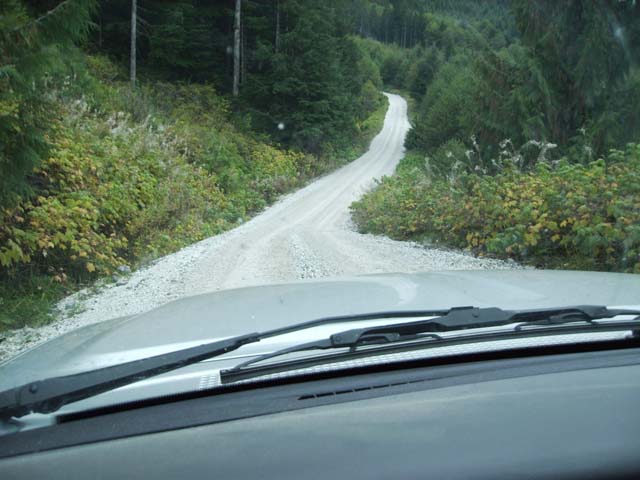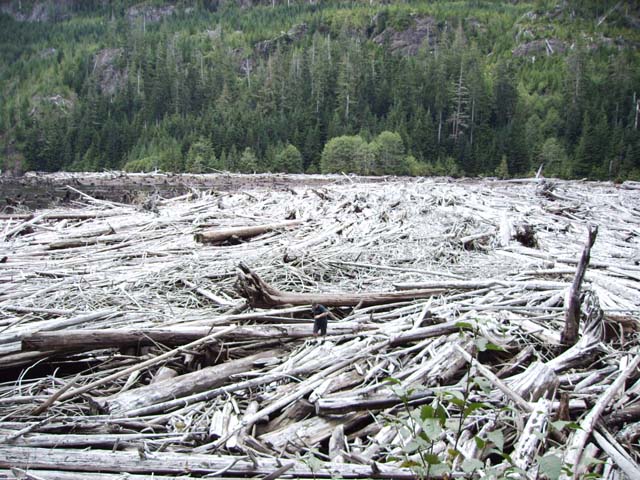Vancouver Island Cave Trip
10/10/2009
| Back to
Tsulton Rising Cave
It is not easy to get into but the
mighty Ford Ranger was up to the challenge. The road into it would have been
impossible to navigate if it were not for the help of local cave
enthusiast Peter Curtis who spend the weekend prior to our first trip in
August clearing the roads and marking the trails so we could find our way in.
The old logging road has been inactive
for many years and is quite overgrown. My poor truck has not looked the
same since this was my second trip into this cave system. I guess the main
thing is I bought the truck for this purpose so I guess I should expect a
few dings and scratches.
|
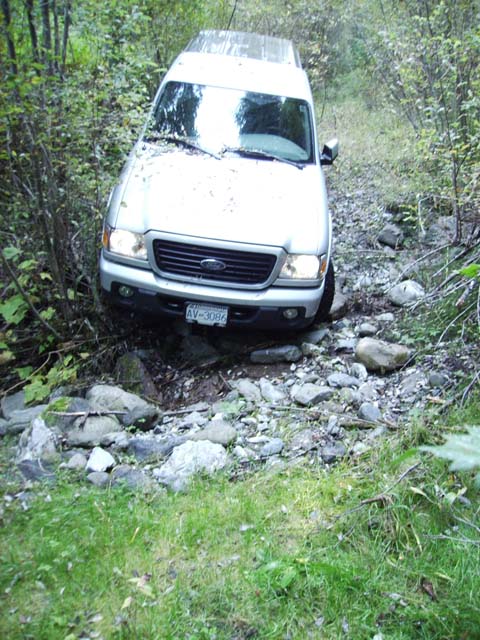 |
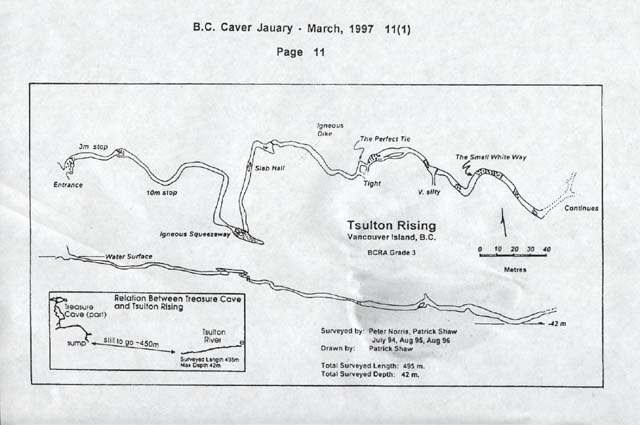
This
is the objective. It is believed the Tsulton River connects to Treasure Cave but
the connection offers some big challenges. First the tunnel drops to 42m (140ft)
before it likely rises to hopefully emerge in the Treasure Cave. This means a
cave diver has to incur a decompression ceiling in each direction and will have
to make staged deco stops before he even reaches the first end and then
depending on the access at the other end may or may not have to return back the
same way incurring yet another decompression obligation. It is for this reason
we have chosen to use rebreathers for this exploration. Even though the
rebreather may be bulkier than a sidemount system it seems to be the best choice
logistically.
Of
course no sane rebreather diver would enter a cave without adequate bailout gas.
 |
Aaron entered the tiny
opening waiting for me to follow right behind. The entrance is too small
for two divers to enter together so the plan was for Aaron to drop past
the first restriction to 10ft and wait for me to get in. There is a 90
degree bend immediately upon entry so he waited there. As I was moving my
bailout cylinder the HP hose blew. Unfortunately I had no way to signal
him and so I just proceeded back to the truck to get a spare reg I had
there. By the time I got the reg changed Aaron had been waiting patiently
for 15 minutes for me to go in. He finally surfaced and I was just about
ready to enter by then so he had about 20 minutes in the cave before I was
even ready to dive. One of the biggest challenges of these caves is the
cold water and 20 minutes of doing nothing in this water is no picnic |
Although there are several major restrictions
in this system the tunnel has been fairly open so far. We are concerned that
there will be a point that we can go no further with the rebreathers at which
time we will have to get more creative but so far so good.
By a remarkable coincidence when I got home
from this trip I had an email from Pat Shaw who had provided this map. He had
heard we were continuing the exploration of this system and wanted to hear about
our progress.
Cruising around in Northern
Vancouver Island holds all kinds of interesting sights
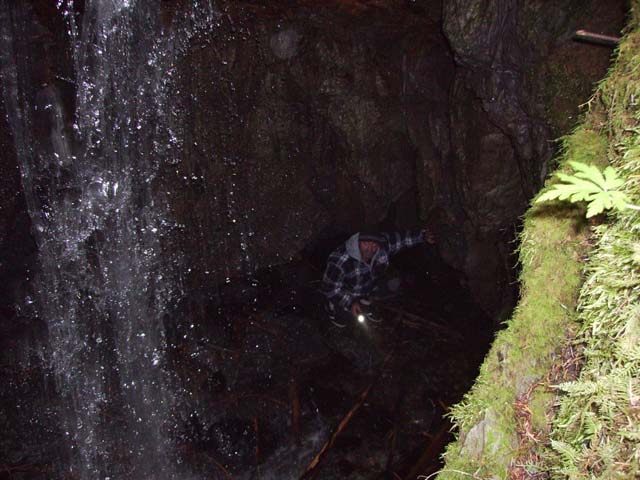
First Look at Devil's Spring
| Near Devil's Bath there is an
opening into the Benson River known as Devil's Spring. This cave system is probably fed from
Devil's Bath. Pictured here is a view of Devils Bath from the cliff above.
When we were cave training in Mexico Matt told us you find the siphon side
of the cenote by looking for where the leaves and twigs collect. Well
these twigs are huge logs and if you look closely you can see the log jam
goes all the way to the bottom. Aaron and I dived here 2 years ago and
found the siphon side to be inaccessible due to all the logs but we
believe this is the source of Devil's Spring.
|
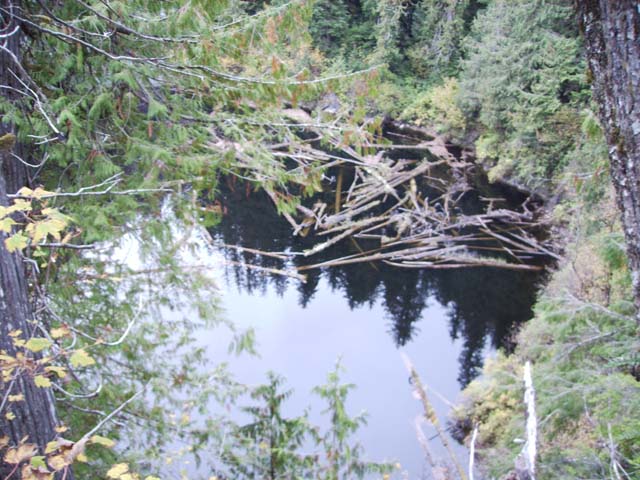 |
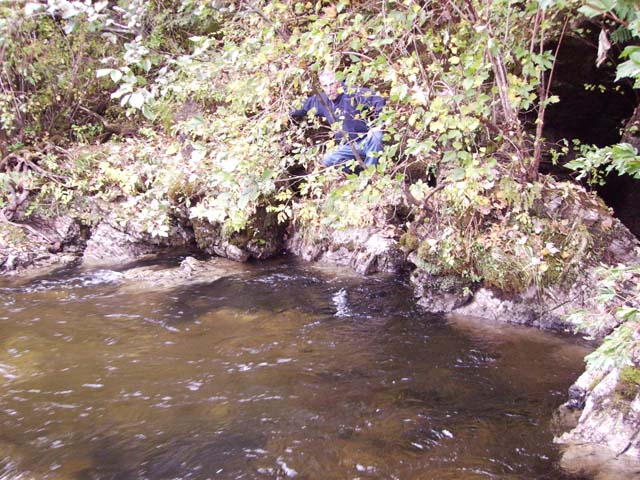 |
The water leaving the Devil's
Bath probably exits here. The water can be seen boiling out of this tiny
hole into the Benson River. The tunnel opens up below the entry but the
breakdown area at the mouth of the cave makes the water look like a
washing machine. Aaron was able to pull himself into the Devil's Spring
opening and went to a depth of 160ft. The flow slows down considerably
below 30ft and the tunnel has been surveyed to a depth of 260ft and it
keeps on going...
|
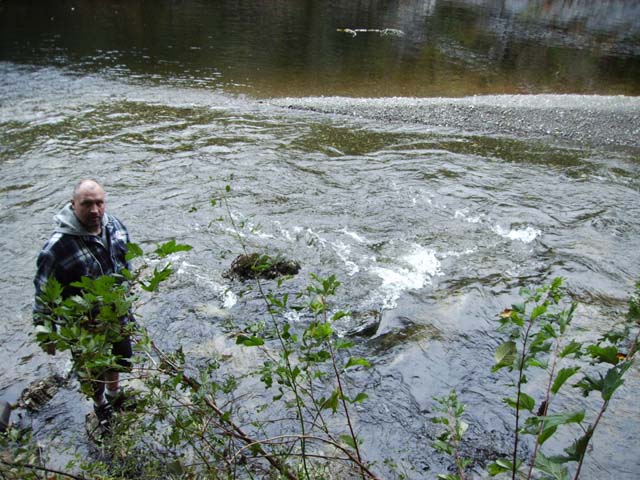 |
Here you can see the water flowing rapidly out of the
cave yet further out the rest of the river flows lazily along. The gravel bar
seen in the middle of the river separates the cave flow from the river flow. |
BACK



